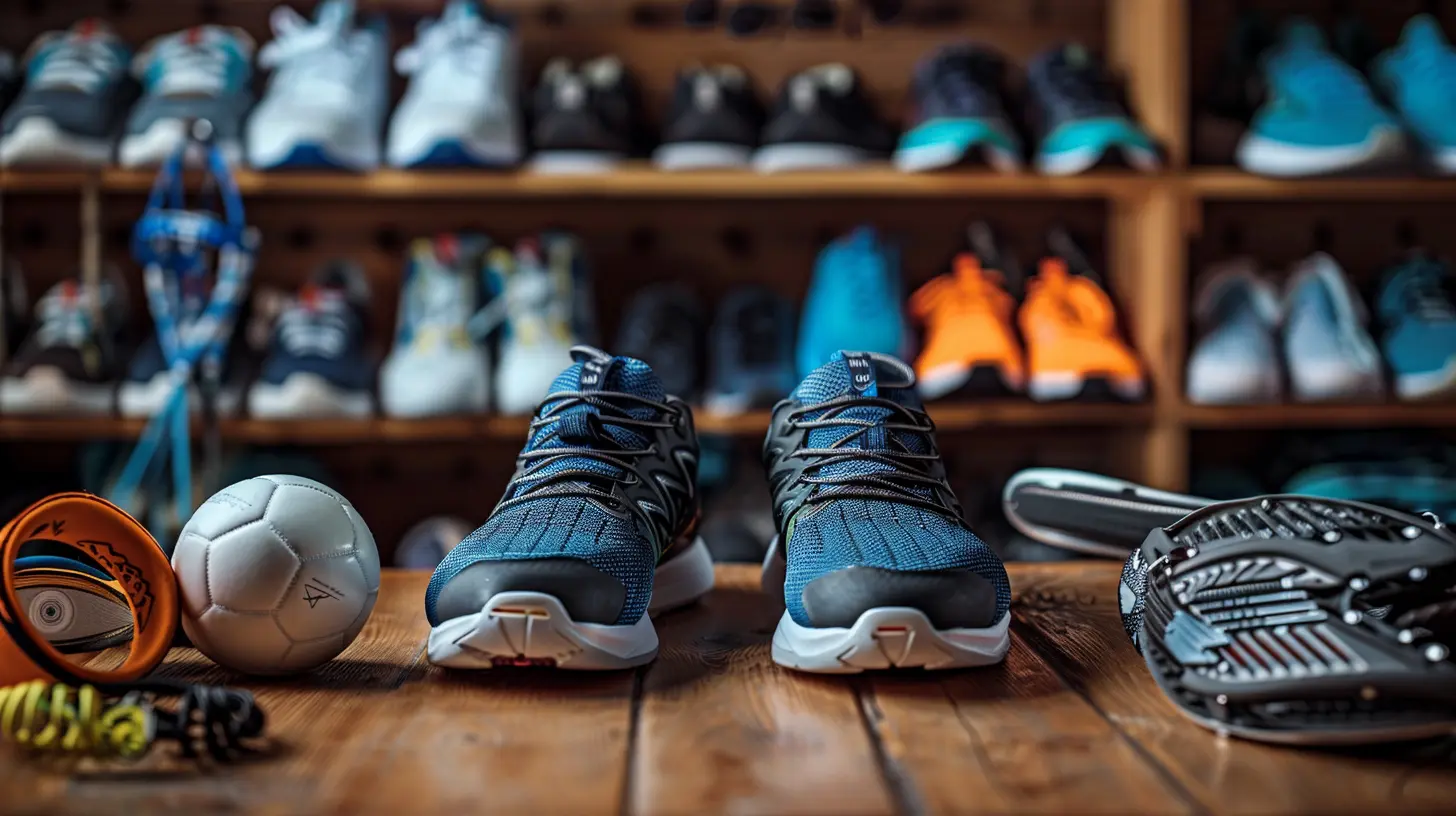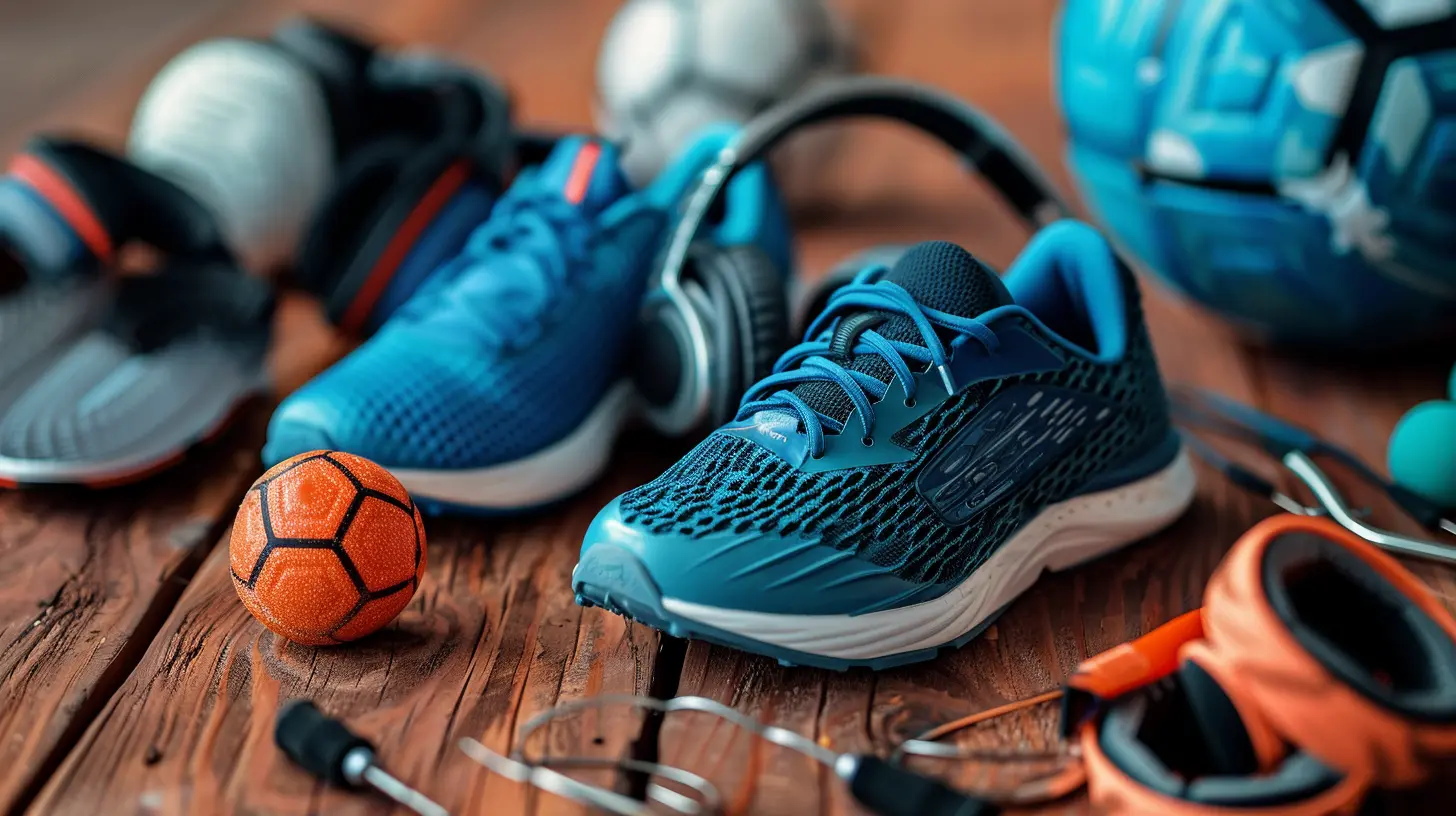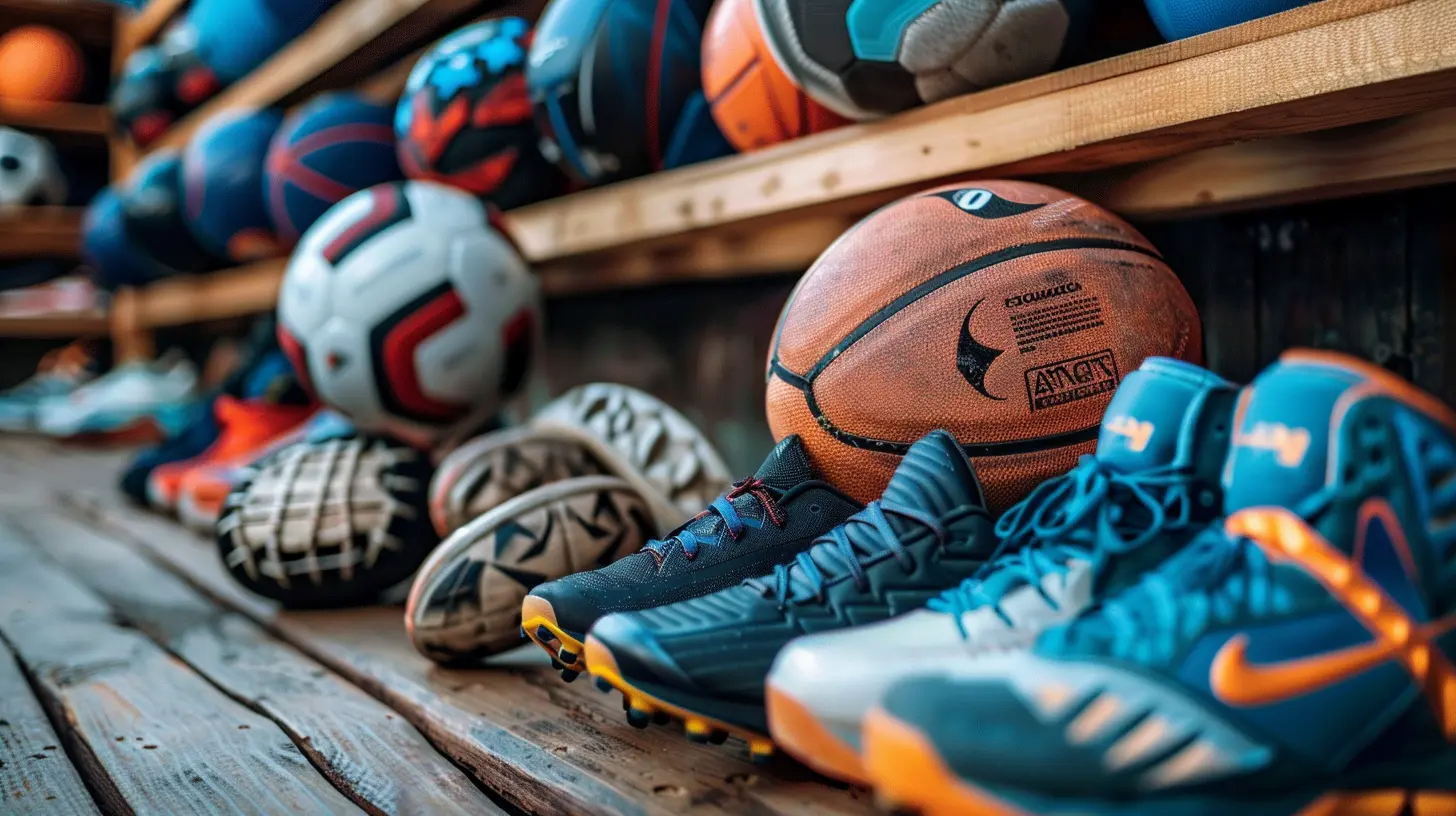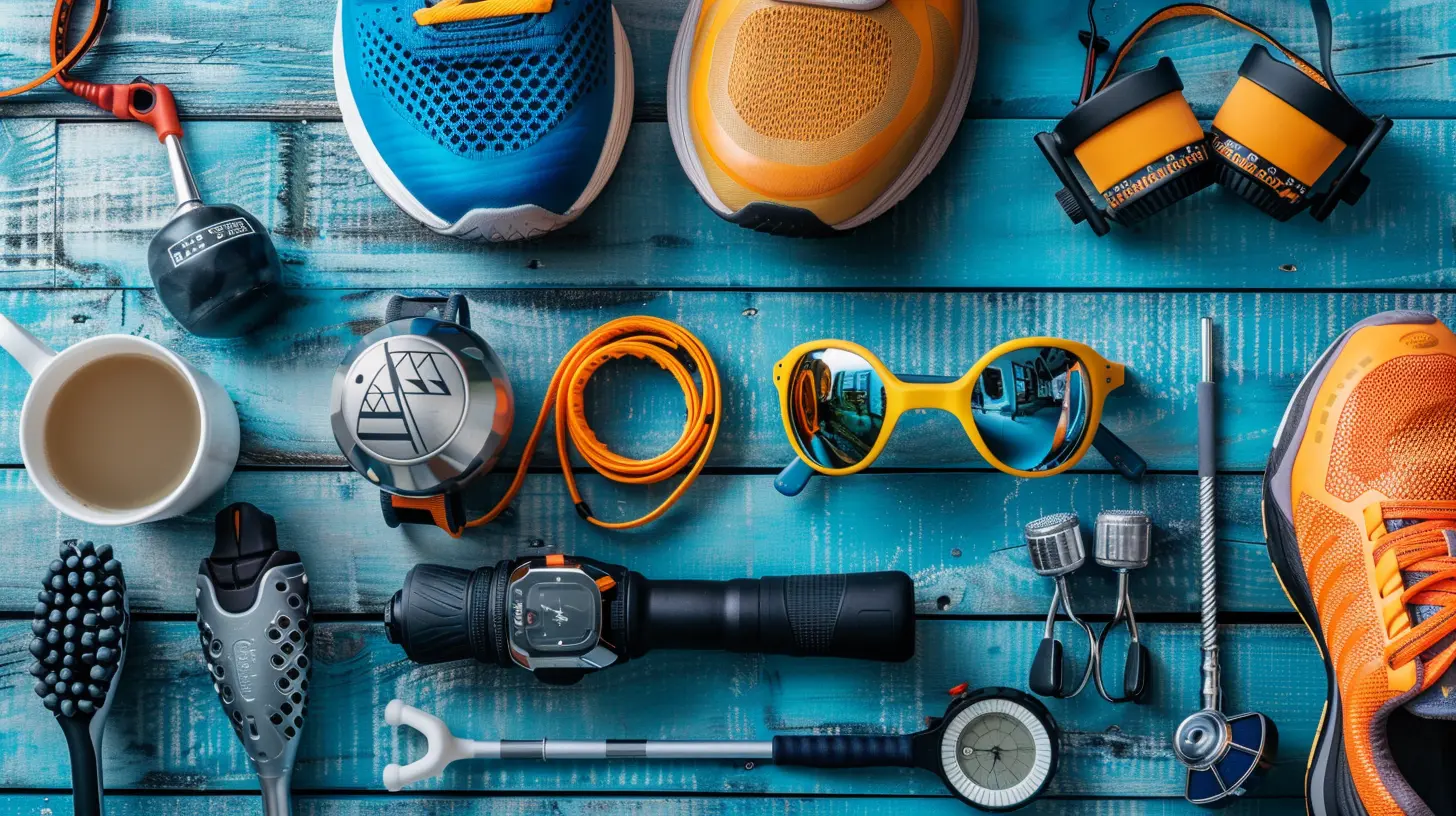Understanding the Benefits of Smart Sports Equipment
8 October 2025
Hey there, sports fans and fitness junkies! Whether you’re shooting hoops, pounding pavement on a morning run, teeing up on the golf course, or just breaking a sweat at the gym, there's one thing we all have in common—we want to get better. And not just better, but faster, stronger, and more efficient. That’s where smart sports equipment steps in and completely changes the game. Literally.
Smart gear has been making big waves across the sports world—and no, it’s not just another tech fad. We're talking about wearable gadgets, app-driven tools, and AI-powered devices that track, analyze, and help boost your performance in real time.
So, grab your protein shake, kick back, and let’s break down exactly why smart sports equipment might just be your new workout BFF.
What Is Smart Sports Equipment?
Let’s start with the basics. Smart sports equipment refers to traditional gear (like balls, shoes, rackets, gloves—you name it) that’s been upgraded with technology. These items are embedded with sensors, Bluetooth, GPS, and other smart features that gather data about your performance.Think of it like going from a basic calculator to a full-on smartphone. You’re still doing math, sure—but now you’re doing it at lightning speed, with apps, graphs, and insights you never even knew you needed.
Some examples you might’ve already seen:
- Smartwatches that track heart rate, speed, and distance.
- Connected basketballs that analyze shot angle and backspin.
- Tennis rackets that measure swing power and ball impact zone.
- Smart insoles recording your stride and pressure points.
Pretty cool, right?
The Real-World Benefits of Smart Sports Equipment
So, what’s the big deal? Why are athletes from beginners to pros swearing by these techy tools? Let’s take a closer look at the benefits.1. Track Your Performance Like a Pro
Ever wonder if you’re really getting better—or just getting sweatier? Smart sports gear helps take the guesswork out of performance.With real-time data collection, you can access:
- How fast you're running
- How hard you're punching
- How accurate your swing is
- Your heart rate during specific intervals
You’re basically getting personal feedback after every move. It’s like having a private coach watching over your shoulder—without the awkward eye contact.
2. Set Goals and Crush Them
Let’s be real: goals are what keep us moving. Smart devices motivate you by setting personalized targets and monitoring your progress.You’ll know when to push harder or when to take a breather. The gear can even suggest workouts or drills based on your past performances. It's like having a roadmap to fitness success instead of wandering aimlessly through your next session.
3. Injury Prevention and Recovery Monitoring
Been sidelined by an injury before? It's the worst. But smart equipment can help reduce that risk.These gadgets:
- Detect improper form
- Monitor overuse of joints and muscles
- Alert you to fatigue levels
Basically, they’re your caution signs before things go south. And if you’re already nursing an injury, smart wearables can help monitor your recovery to ensure you're healing properly—not overdoing it and hitting the ER again.
4. Make Training More Engaging
Let’s face it—sometimes workouts get dull. But smart tech has a way of making things more fun again.Gamification (yes, it’s a thing) turns routine drills into competitive challenges. You can earn points, beat virtual opponents, and rank on leaderboards. It’s like turning your workout into a video game where you’re the main character.
And guess what? That playful approach actually gets results because you’re more likely to stick with it.
5. Data-Driven Coaching
If you’re working with a coach, smart gear makes both your lives easier. Instead of relying on gut feelings or assumptions, coaches can look at hard data.They can analyze:
- Your swing angle
- Jump height
- Speed and cadence
- Muscle activation
All of this lets them tailor training plans more effectively. Think of it like fine-tuning a car: they know exactly what to tweak for maximum output.
Popular Types of Smart Sports Equipment
Alright, let’s nerd out a little. What types of smart equipment are out there? Here's a quick rundown.🛡 Smart Wearables
Probably the most recognizable kind. These include:- Smartwatches
- Fitness bands
- Heart rate monitors
- Oxygen saturation trackers
These babies keep tabs on your overall health and metrics throughout your day.
👟 Smart Footwear
Sounds futuristic, right? Shoes now track:- Stride length
- Ground contact time
- Running efficiency
Perfect for runners, tennis players, and anyone on their feet.
🏀 Smart Balls
Basketballs, soccer balls, and even golf balls come packed with sensors to monitor spin, speed, and impact.It’s like having instant replay for your swing or shot.
🏋️ Smart Gym Equipment
From connected treadmills to tech-loaded dumbbells, smart gym gear adjusts resistance, tracks reps, and even corrects form with voice or app feedback.Suddenly, that home gym feels a lot less lonely.
Smart Equipment for Every Athlete—From Newbie to Pro
You might be thinking, “That sounds cool, but do I really need all this tech if I’m not aiming to go pro?”Short answer? Absolutely.
Smart sports gear meets you where you're at. Whether you’re just starting out or prepping for elite competitions, the tools scale with your needs.
Beginners can:
- Learn correct form faster- Stay safe while getting into shape
- Set realistic and measurable goals
Intermediates benefit by:
- Fine-tuning specific skills- Challenging personal bests
- Recording progress for motivation
Pros leverage:
- Deep analytics for competition- Recovery tracking and injury prevention
- Team data sharing and strategy building
Everyone’s got a reason to plug in.
The Impact of AI and Machine Learning
It doesn't stop at sensors and stats. The real magic happens when AI (Artificial Intelligence) gets involved.These systems analyze trends in your performance and make predictions or suggestions. For example:
- Suggesting rest days based on exertion levels
- Adjusting your training volume in real-time
- Recommending nutrition tweaks based on energy output
It’s like your gear is getting smarter with you—evolving as you train.
Crazy stuff, right?
Are There Any Downsides?
Alright, we’d be lying if we said it’s all perfect. A few things to keep in mind:- Cost: Smart gear can be pricey. But hey, think of it as investing in your body—like a gym membership that travels with you.
- Privacy: You're giving away data. Make sure the brand you're buying from has solid privacy policies.
- Tech Learning Curve: If you're not into gadgets, there’s a bit of setup and troubleshooting at the beginning. Nothing a good YouTube tutorial can’t fix, though.
How to Choose the Right Smart Sports Equipment
Feeling the urge to upgrade your sports bag now? Before you start randomly tossing gear into your online cart, here are a few quick tips to help you pick smart:1. Know Your Sport: Some gear is ultra-specific (like smart basketballs or connected golf clubs), while others (like wearables) work for multiple sports.
2. Budget Wisely: Don’t go overboard—start with a single piece of equipment that addresses your biggest need.
3. Check Compatibility: Some devices only pair with certain apps or smartphones.
4. Read Reviews: Jump into forums, videos, and product pages. Real users give the best feedback.
The Future of Smart Sports Gear
Where’s all this headed? Honestly, we’ve only scratched the surface.Here’s what you can expect in the near future:
- Real-time AR (Augmented Reality) coaching overlays
- VR-based sports training simulations
- Biometric clothing with emotion and hydration sensors
- AI-based live commentary on your workouts
Yeah, it’s getting wild out there.
Final Thoughts
Smart sports equipment isn’t just about fancy gadgets—it’s about unlocking your full potential. Whether you're chasing medals or just trying to finish that 5K without walking, the insight and motivation smart gear provides can be a total game-changer.Plus, let’s be real: training with cool tech is just more fun. And when workouts are fun, we actually do them.
So next time you lace up, grab your smart gear and let the data be your new workout partner. Who knows—you might just surprise yourself.
all images in this post were generated using AI tools
Category:
Sports GearAuthor:

Ruben McCloud
Discussion
rate this article
1 comments
Vesper Wolfe
Fascinating topic! I'm eager to learn how smart sports equipment enhances performance and training. Could these innovations also promote injury prevention and better recovery? Excited to see the future of sports!
October 28, 2025 at 4:19 AM


